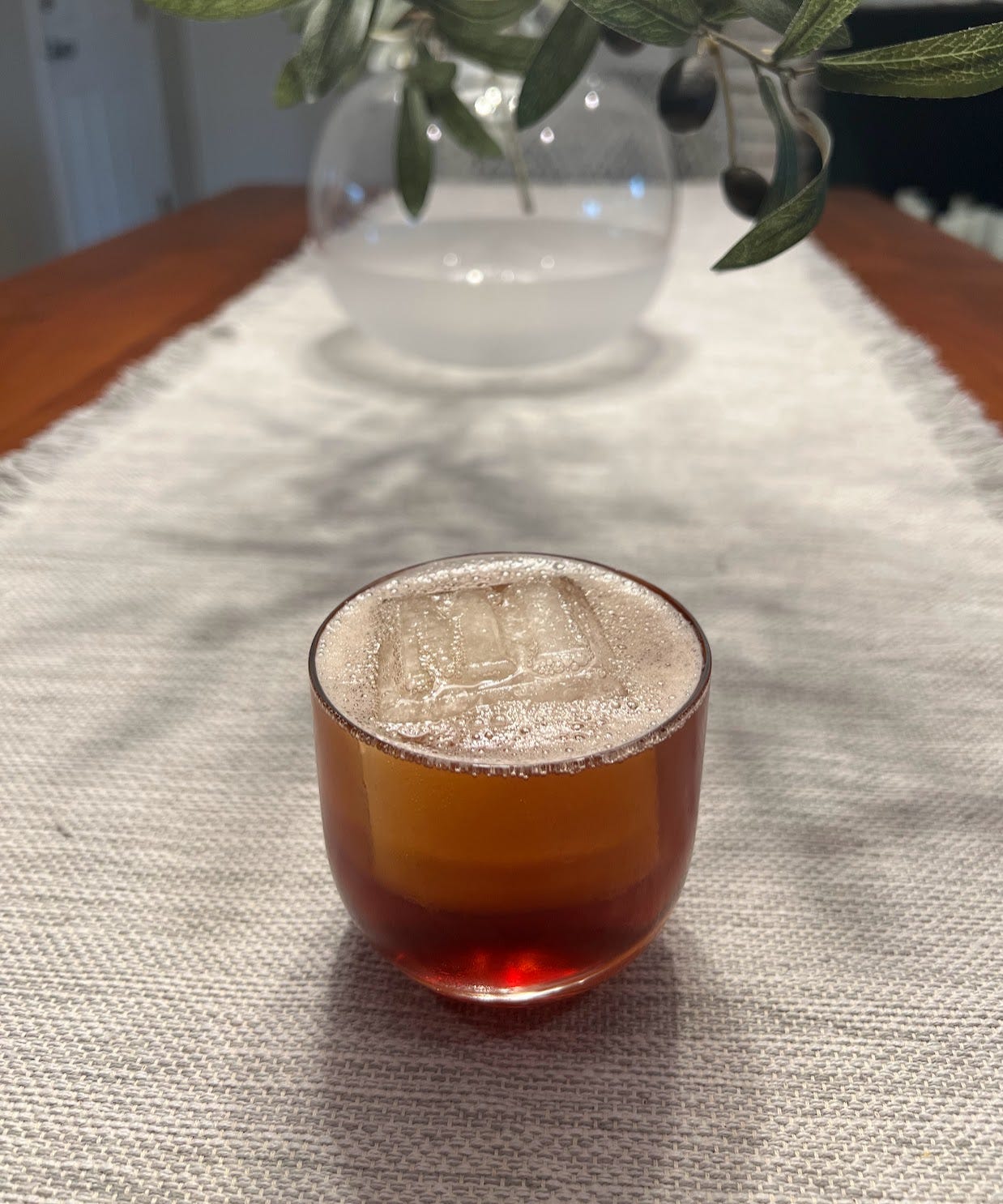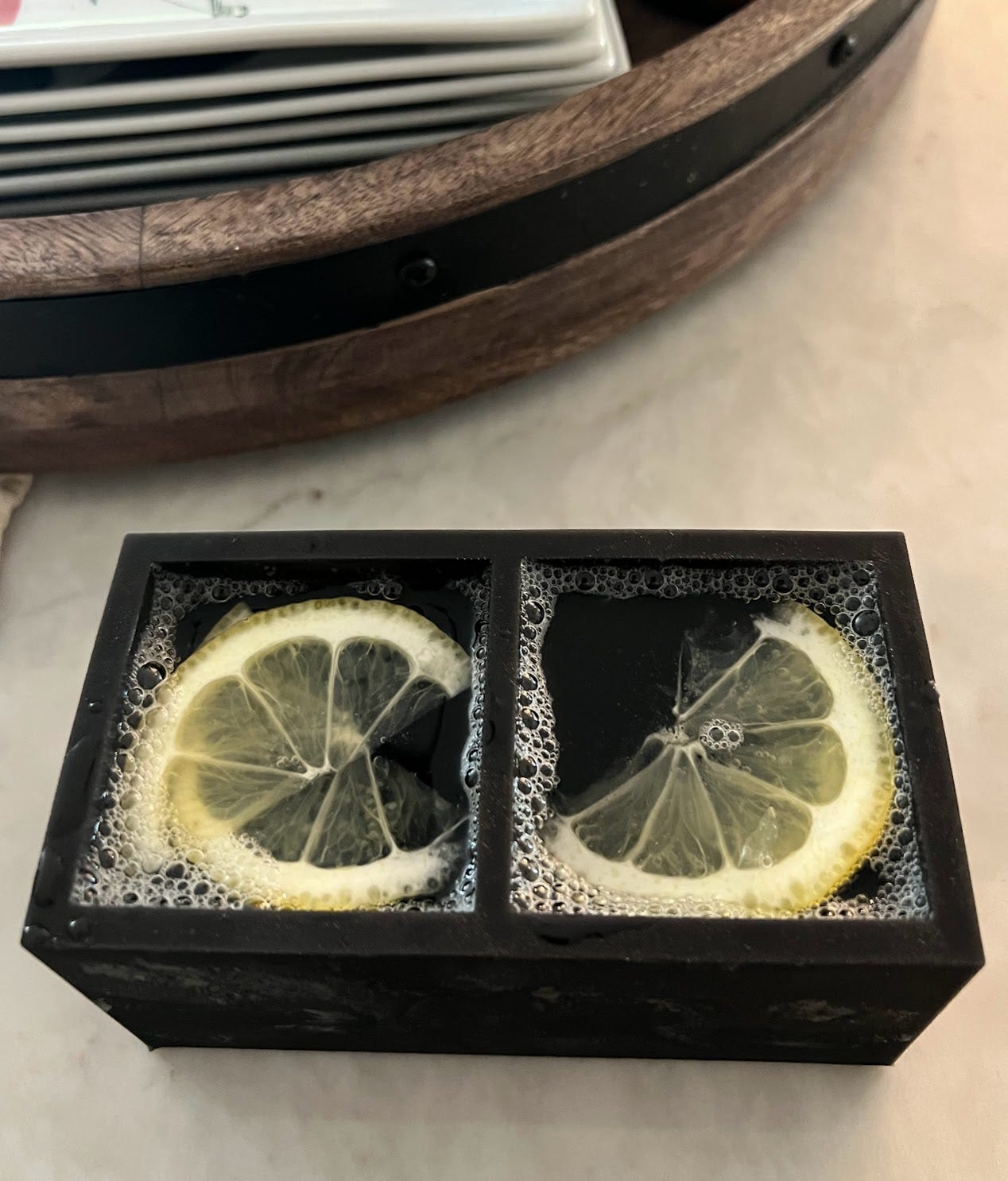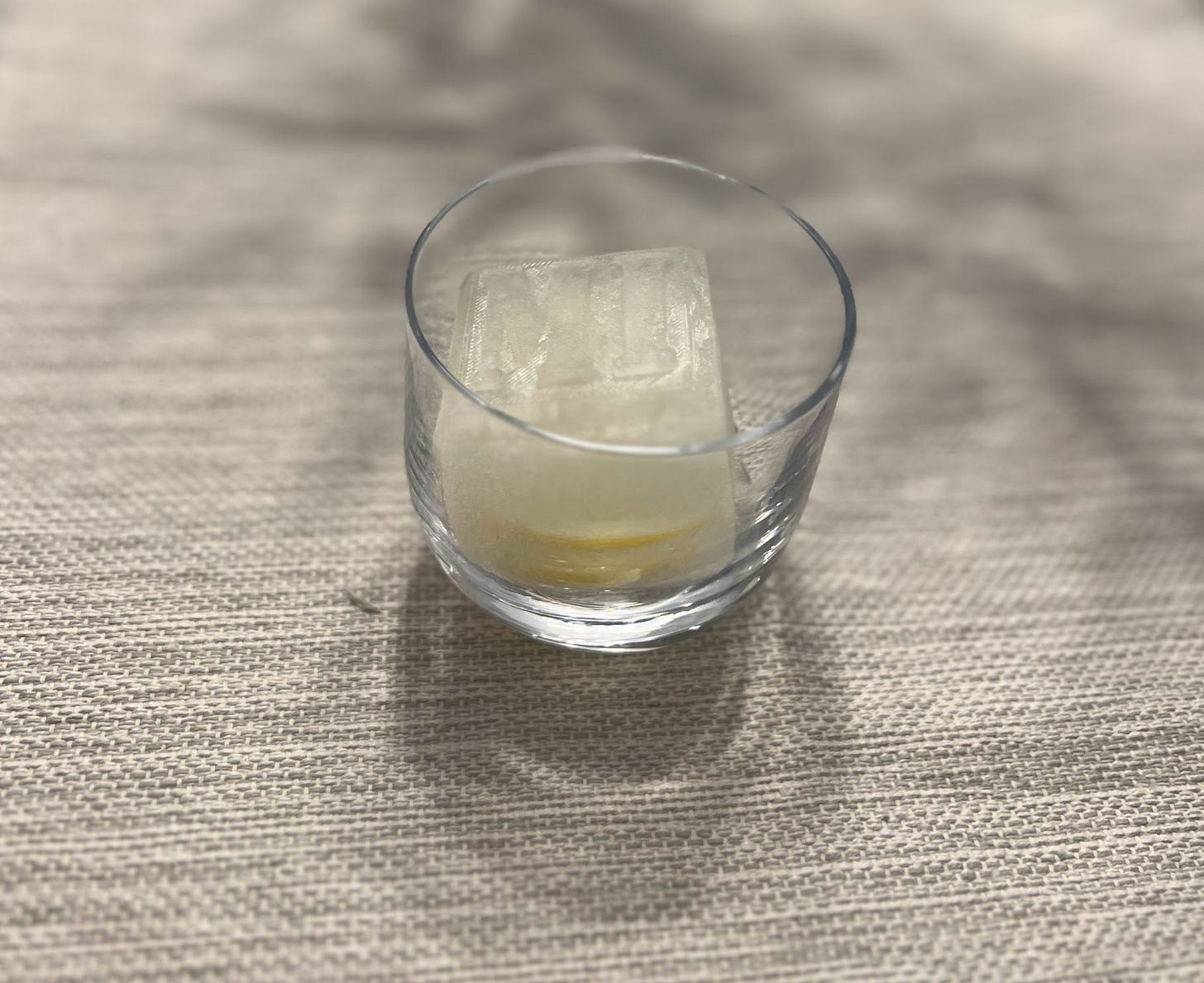Sweet to Sour
September's Cocktail of the Month features a classic French bitter and sweetener with some fun, fancy ice that changes the cocktail as you drink it
The Cocktail - Currant Addition
As I mentioned the last few months, I’m about to head to out to Italy and France for a few weeks. I’m excited. And as I’ve been thinking about incorporating more French ingredients into cocktails, I’ve realized that I’m relatively naive to the world of cremes. So, I wanted to rectify that this month and dive into a blackcurrant liqueur to sweeten up the bitter ingredients we procured last month.
But, since cremes can be quite cloying, I also wanted a way to combat that. The bitter helps, but the best balance for sweet is always sour. So, I also added a (branded!) ice cube infused with lemon that adds some sourness as the drink sits and you sip it. The result is a drink that changes over time and goes from a bit too sweet to a bit too sour, with a perfect zone in the middle, which I think is kinda fun.
What You Have - Suze, Early Grey Sun Tea
As has become the norm these days, you might need to make some more tea before you make this drink. It probably didn’t last the month, but if it did you’ll still be well-served by a fresh batch. The citrus notes from the tea really help out here.
The elderflower from the Suze will be more pronounced in this cocktail as well. That’s mostly because it’s no longer competing with the mustiness of Grappa, so you get a bit more floral, bitter punch across the board. It’s not overpowering, but it certainly isn’t taking a back seat.
What to Buy - Creme de Cassis
Creme /=/ Cream. That’s the #1 thing to realize when you start exploring this subset of (usually) French liqueurs. It really just means that it has a very high sugar content, more like an alcoholic syrup, compared with most liqueurs. In the case of Creme de Cassis, the process is simple. A producer (likely in Burgundy) harvest the blackcurrant berries, crushes them, rests them in a high-proof grain alcohol, and then later adds sugar.
It’s a very simple process that’s been mostly consistent since ~1840 where the quality of the berries matters greatly to the finished product. That’s why Burgundy, and Dijon specifically, have started labeling their cremes with the regional designation. Because the berries are what matters, the berries are what you taste. To me, this generally tastes like a boozy version of a high-quality blueberry syrup.
Because of that, they’re best used as the actual direct sweetener rather than just a flavor augment. Basically, use this like the orange syrup you made a few months back, not like the Aperol that helped create it.
What to Make - Lemon Ice
Making infused ice can be tricky, but this one seems to be quite forgiving. In a large mold (believe this one is 1.5 x 1.5) I added a few very thin lemon slices, and then replaced about 20% of the water with lemon juice.
It froze completely solid, no mushiness, and the slices look neat taking up most of the space of the bottom of the ice.
The slightly-yellow color isn’t too noticeable, but the slices sure are. the juice does tend to settle at the bottom of the mold which becomes the top of the cube in this case, so the dilution starts as soon as you pour the cocktail in which is perfect.
The Recipe
Just like last month, this one works best shaken. Add everything to a shaker with a bunch of ice, and shake for as long as you can as fast as you can to get a bunch of air into the cocktail.
1 oz Earl Grey Sun Tea
1 oz Gin
0.75 oz Suze
0.75 oz Creme de Cassis
Strain it out over your lemon ice that’s been resting in a rocks glass, and serve! Over about a half hour, the lemon ice will melt dramatically and the drink will be changing consistently over that period. For me, it was best in the 10-20 minute range, so you might want to take a sip and let it sit for a while before you return to it.




